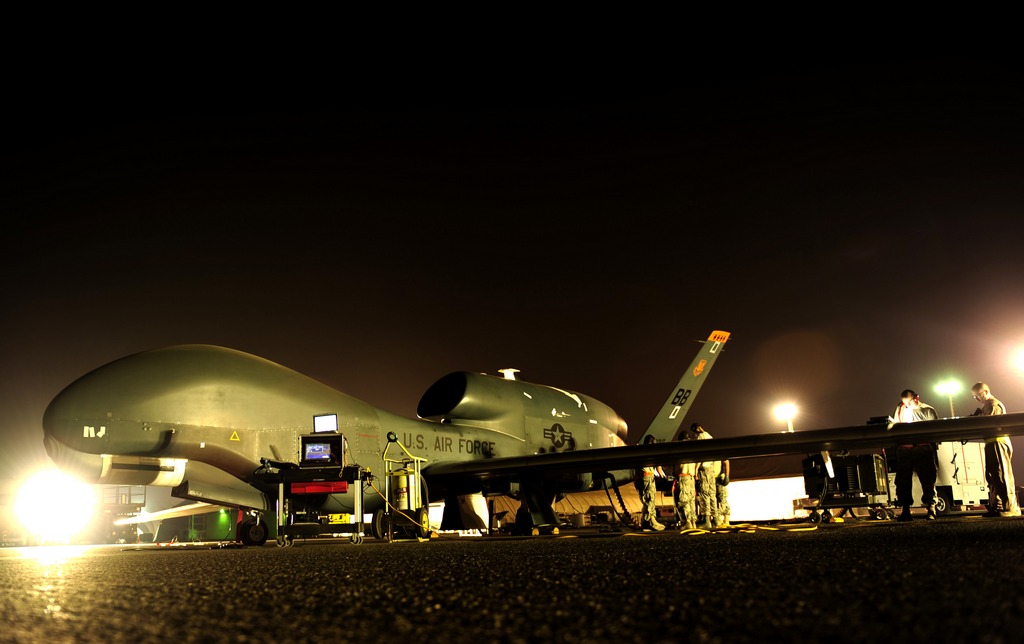
According to U.S. Defense officials, the one between a U.S. RC-135U and a Russian Air Force Su-27 Flanker was something more than a routine intercept.
The RC-135U is one of the most secretive U.S. surveillance planes. It provides strategic electronic reconnaissance information, performing signal analysis by means of a wide variety of commercial off-the-shelf and proprietary hardware and software, including the Automatic Electronic Emitter Locating System.
In short, the Combat Sent can simultaneously locate, identify, and analyze multiple electronic signals.
Only two such kind of RC-135 are operated by the 55th Wing from Offutt Air Force Base, Nebraska but they are usually deployed abroad to keep an eye where needed.
On Apr. 23, a U.S. Air Force RC-135U Combat Sent performing a routine surveillance mission in international airspace over the Sea of Okhotsk, north of Japan, some 60 miles off eastern Russia was intercepted by a Russian Su-27 Flanker.
Unlike almost all similar episodes, occurring quite often during and after the Cold War across the world, the one conducted by the Russian Air Force Su-27 at the end of April was a “reckless intercept”, “one of the most dangerous aerial encounters for a U.S. reconnaissance aircraft since the Cold War,” according to Defense Officials who talked to Washington Free Beacon’s
According to the Pentagon, the first part of the interception was as standard: the Su-27 (most probably the leader of a flight of at least two Flankers) approached the RC-135U and positioned more or less abeam the “intruder”. Then, instead of breaking away after positive identification of the “zombie” without crossing the line of flight of the intercepted aircraft, the Su-27 crossed the route of the U.S. spyplane putting itself within 100 feet of the Combat Sent.
A dangerous maneuver (not compliant with the international standards) that momentarily put the two aircraft in collision course.
An episode that reminds the far more dangerous close encouter of another U.S. spyplane with the Chinese Navy back in 2001.
On Apr. 1, 2001, a U.S. Navy EP-3E with the VQ-1, flying an ELINT (Electronic Intelligence) mission in international airspace 64 miles southeast of the island of Hainan was intercepted by two PLAN (People’s Liberation Army Navy) J-8 fighters.
One of the J-8s piloted by Lt. Cdr. Wang Wei, made two close passes to the EP-3 before colliding with the spyplane on the third pass. As a consequence, the J-8 broke into two pieces and crashed into the sea causing the death of the pilot, whereas the EP-3, severely damaged, performed an unauthorized landing at China’s Lingshui airfield.
The 24 crew members (21 men and three women), that destroyed all (or at least most of ) the sensitive items and data on board the aircraft, were detained by Chinese authorities until Apr. 11.
Anyway, Russian pilots have been involved in similar incidents during intercept missions during the years. Just two examples.
On Sept. 13, 1987, a RNoAF P-3B had a mid air collision in similar circumstances with a Soviet Sukhoi Su-27 Flanker over the Barents Sea.
In Apr. 2012, whilst flying over the Barents Sea on a routine mission, a Norwegian P-3 Orion came across a Russian Air Force Mig-31 Foxhound.
Image credit: U.S. Air Force
H/T to Giuseppe Stilo for the heads-up.
Related articles











